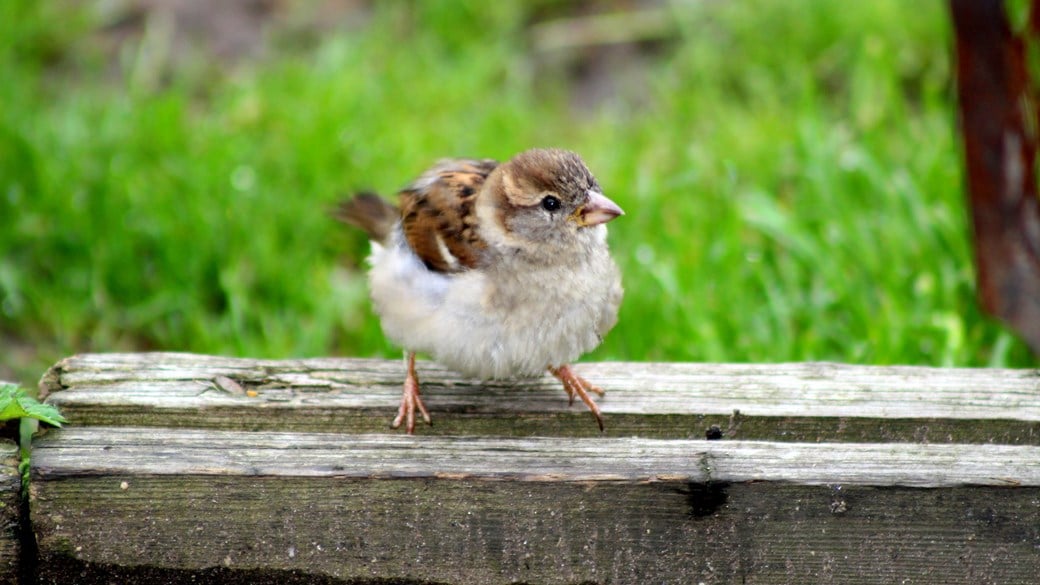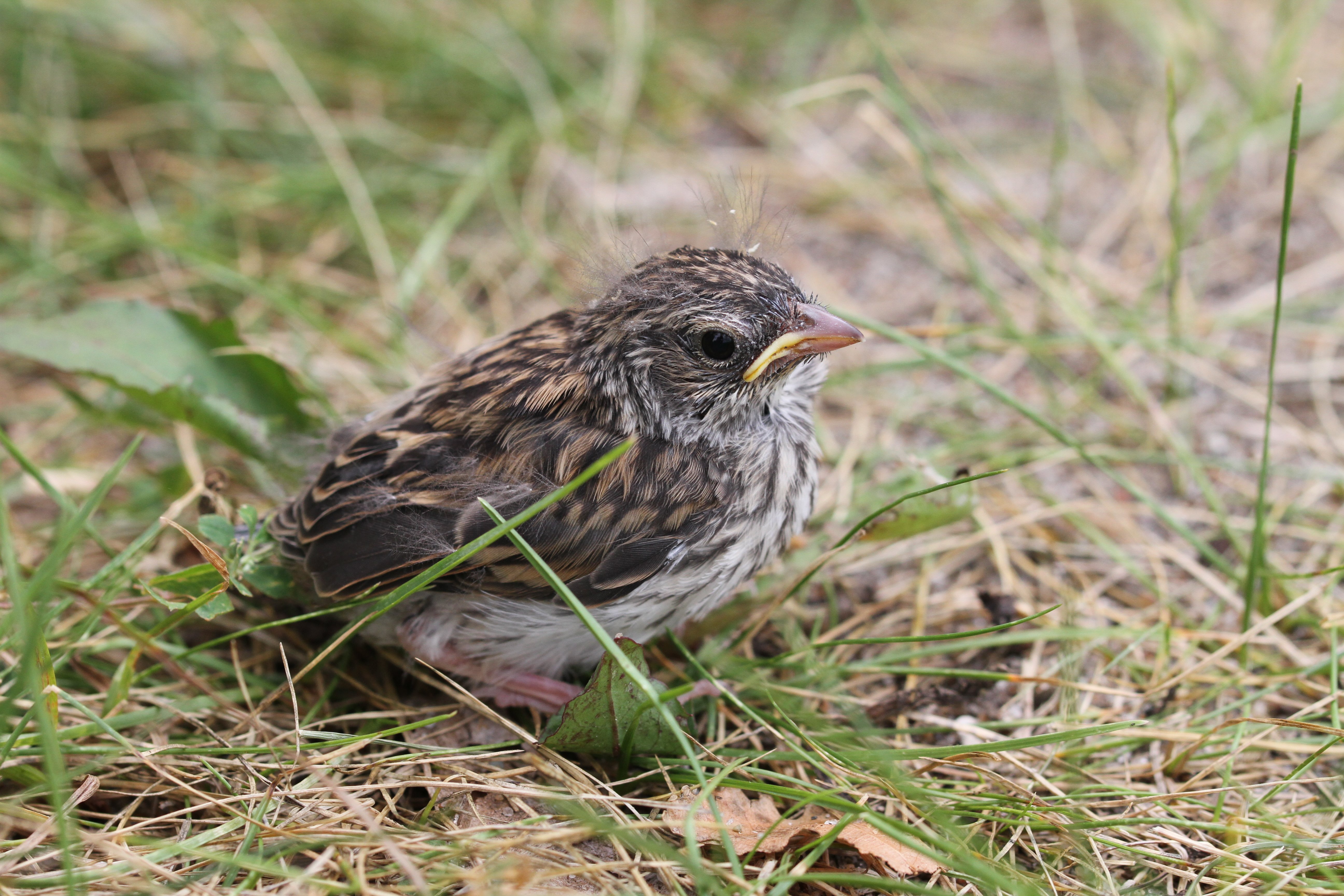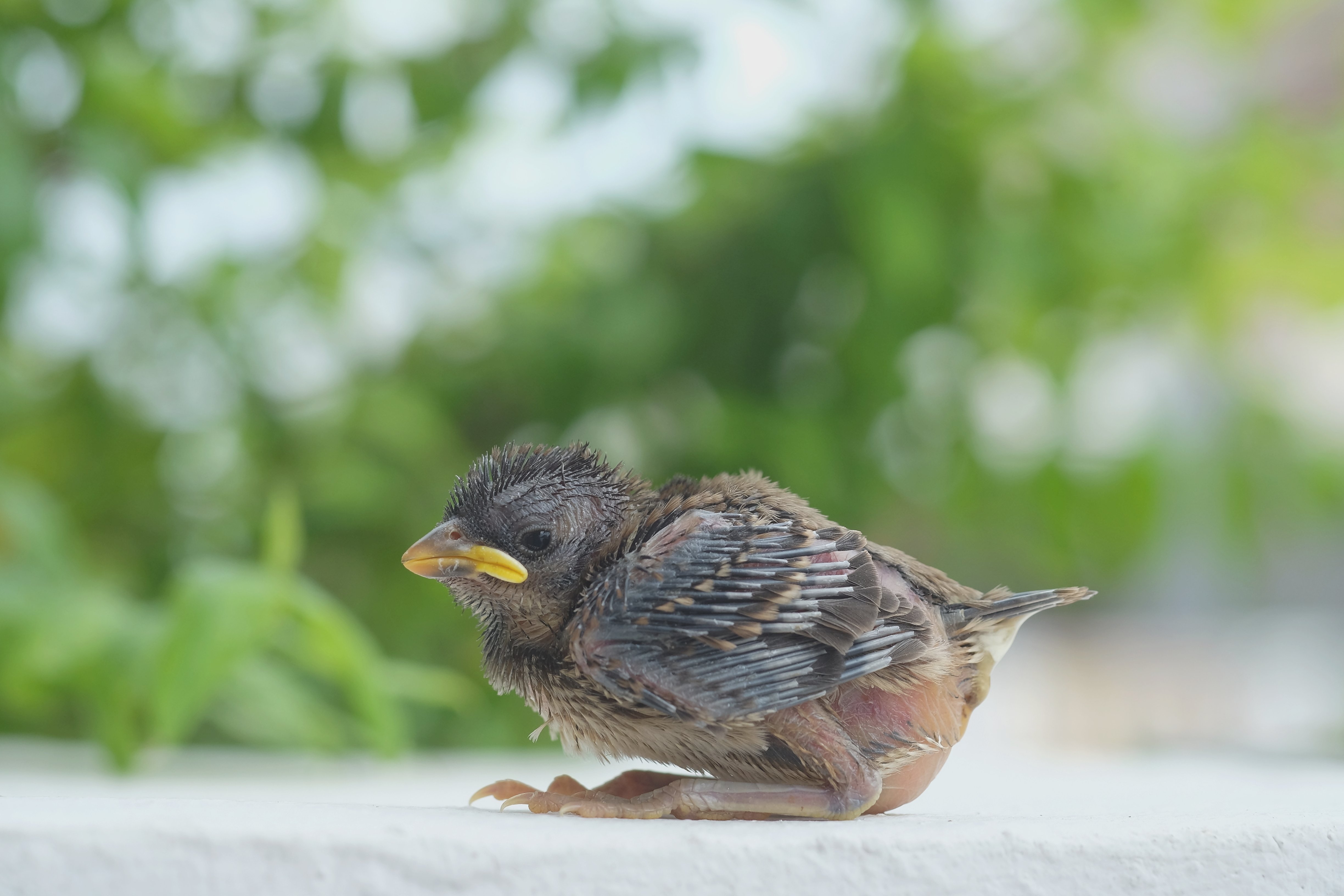
What to do if you find a baby bird out of the nest
With lighter evenings and warmer spring weather comes baby bird season. As the days go by, you could also start to see baby birds out of their nest or on the ground, or your cat might bring one in.
Baby birds are fragile, and it’s only natural to want to help them and keep them safe. Each year, many baby birds are taken out of the wild by well-meaning people who mistakenly believe the chicks are in danger or have been abandoned when, in fact, most of these birds were still in the care of their parents.
So, if you find a baby bird, how do you know when to step in and help and when is it better to leave them in the wild? Well, this depends on the age of the chick, whether it’s in imminent danger and whether it has already been injured.
How to tell a nestling from a fledgling
As baby birds grow, it’s normal for many of them to leave their nests before they’re able to fly. A fledgling is what we call a chick who has most of their feathers and who can stand, hop, perch and flutter. You might see fledglings hopping around under bushes and chirping to their parents. The below image is a fledgling:

A nestling, on the other hand, is a baby bird who isn’t ready to leave their nest. You can recognise a nestling because they’ll have few or no feathers. They won’t yet be able to support their own bodyweight on their legs so they may rest on their tummy or chest. The below image is a nestling:

What to do with a nestling
A nestling who has fallen out of their nest needs help as they can get cold quickly, they aren’t mobile enough to move to safety and their parents will struggle to feed them while they’re separated from the other chicks. Occasionally, parent birds evict a chick if they can tell it’s unwell or dying but it may be difficult for you to know whether you’ve found a healthy nestling or not. Healthy chicks are usually active and strong, whereas unwell ones may be floppy and weak.
If you can see the nest and if you can return the chick to it without risking your own safety, that is the best thing to do. Provided the chick was healthy to start with, the parent birds are its best chance of survival. Be careful not to squeeze the chick as you handle it and only replace it if you’re sure this is the correct nest. If the chick you’ve found doesn’t look like the chicks in the nest, you might have the wrong nest and shouldn’t leave the chick in it.
Once the chick is back in the nest, you can monitor the situation from indoors but it’s important not to disturb the parent birds.
If you can’t see where the chick has fallen from or if you can’t access the nest safely, call your nearest wildlife centre for advice as it’s possible the chick will need to be hand-reared.
Sometimes, an entire nest and its occupants gets knocked out of a tree in bad weather. You can try sitting the nest in a free-draining container, such as a plant pot or takeaway pot with holes made in the bottom. Fix the whole thing to a sheltered part of the tree above at least the first branch, then replace the chicks into the nest. If the parent birds don’t come back after two hours, seek help from a wildlife centre. The chances of survival of chicks who have been out of their nest and getting cold for several hours are slim, whether their parents try to continue to rear them or whether you take them to a rehabilitator.
What to do with a fledgling
Fledglings are always best left alone unless they are in danger. Their parents won’t be far away and will be bringing food to their chick. If you find a fledgling somewhere it’s at risk of being run over or trodden on, move it gently to the closest shelter, such as under a shrub, where its parents will be able to hear its voice and continue feeding it.
If you can see your cat stalking a fledgling, bring your cat indoors and move the chick to a nearby spot where it’s less visible but where its parents will still be able to find it. Ideally, your cat needs to stay in until the baby bird can fly away, which might take a couple of days. If the cat belongs to someone you know, you could ask them whether they could shut their cat in for a short time to allow the fledgling to move to safety.
Sometimes, people worry that a baby bird has been abandoned. Handling the chick to move it to safety won’t cause the parents to abandon it as they don’t have a good sense of smell, but staying in the area after moving a fledgling could make the parent birds worried about coming back. If you can monitor the fledgling without disturbing the parent birds, for example, from indoors or from further away using binoculars, you should be able to tell whether the parent birds are still coming to feed their chick. If you have been monitoring for two hours and there has been no sign of the parent birds coming with food, contact a wildlife centre for advice.
Swifts, swallows and martins can fly as soon as they leave their nests and should never normally be helpless on the ground. So, if you find one of these, it’s best to get advice from a wildlife centre.
What to do with an injured baby bird
If you find a bird of any age who has been injured, for instance, because a cat has caught them, you’ll need to contact a wildlife centre for help.
Some wildlife centres have their own vets and some work with local vets to treat and rehabilitate wild animals and birds. They will be able to advise you whether to bring the chick directly to them or whether you should contact your vet first. It’s usually best to transport birds in a small cardboard box with a lid, into which you’ve poked some air holes, and something soft and absorbent on the bottom which won’t trap little legs, such as folded kitchen roll.
Who to contact if you find a baby bird
- You could contact your vet practice for advice. They may recommend bringing the baby bird to them or they may tell you where your closest wildlife centre is.
- You can go to helpwildlife.co.uk for a directory of wildlife rehabilitation centres you could contact for help.
- The RSPCA (England and Wales), SSPCA (Scotland) and USPCA can offer advice about what to do next.
- If you already know the contact details of your local wildlife rescue centre, you can contact them direct.
When to take a baby bird into captivity
Chicks have the best chance of survival if their parents rear them. Taking a baby bird out of the wild should only be done as a last resort and only on the recommendation of someone qualified to advise you. If any of the following situations apply, you will need to get in touch with a wildlife centre to find out what to do next:
- If you’re certain that the parent birds are dead
- If the chick is injured – you may be able to see wounds or perhaps one wing is hanging
- If the parent birds haven’t been to the chick in two hours
FAQs
Whether a baby bird is likely to survive falling out of their nest depends on many factors. First, how old and how healthy was the chick before they fell from their nest? Next, why did they fall out? Were they a victim of a strong gust of wind or could they have been pushed out of the nest because they were sickly and a risk to the survival of any siblings? Finally, were they injured in the fall and what environmental conditions did they encounter when they fell? Nestlings have a poor chance of survival if they’ve been out of their nest and getting cold for hours before being found.
Take a look at our advice above about how to tell whether you’ve found a nestling or a fledgling, and find out what action to take if you do find one or more chicks out of their nest.
If you spot a fledgling, they may not have fallen out of their nest at all and might simply be experiencing their first few days of life outside. If you watch them for a while, you may see their parents coming to feed them and you won’t need to intervene. Fledglings might chirp to let their parents know where they are.
Have a look at the section above, explaining what to do if you find a nestling out of their nest, as the parent birds may stop feeding them once they’re away from the warmth and safety of the nest and siblings. It’s always best to seek advice from an expert before trying to offer food to a chick, particularly if they’re too young to tell easily what type of chick they are. Chicks must be kept warm while you contact a wildlife rescue, if you don’t think replacing them into their nest is possible.
Once they’ve fledged properly, young birds don’t tend to return to their nest. Instead, they spend around one to two weeks learning to fend for themselves while being supported by their parents. So, unless you find a nestling on the floor (which you can recognise by the lack of fully formed feathers, the presence of fluffy down and the chick’s tendency to rest on their tummy, rather than hopping around) it’s best not to try to return them to their nest, even if you think you know which is the right one. Leaving the nest for the first time is a risky business and something that might be difficult enough to do once, let alone twice!
Unless a fledgling has been abandoned by their parents, they won’t need any extra feeding. Take a look at our advice above about what to do if you find a fledgling and how to tell whether their parents are still coming to feed them. You can do more harm than good if you remove a chick from their parents or if you misidentify the chick and feed them the wrong food. Contacting a wildlife rescue centre for advice if you’re certain a fledgling has been abandoned is the safest thing to do.
Read more expert pet advice
From healthy diets to preventing fleas, find free and helpful pet health and training advice to care for your pet.
